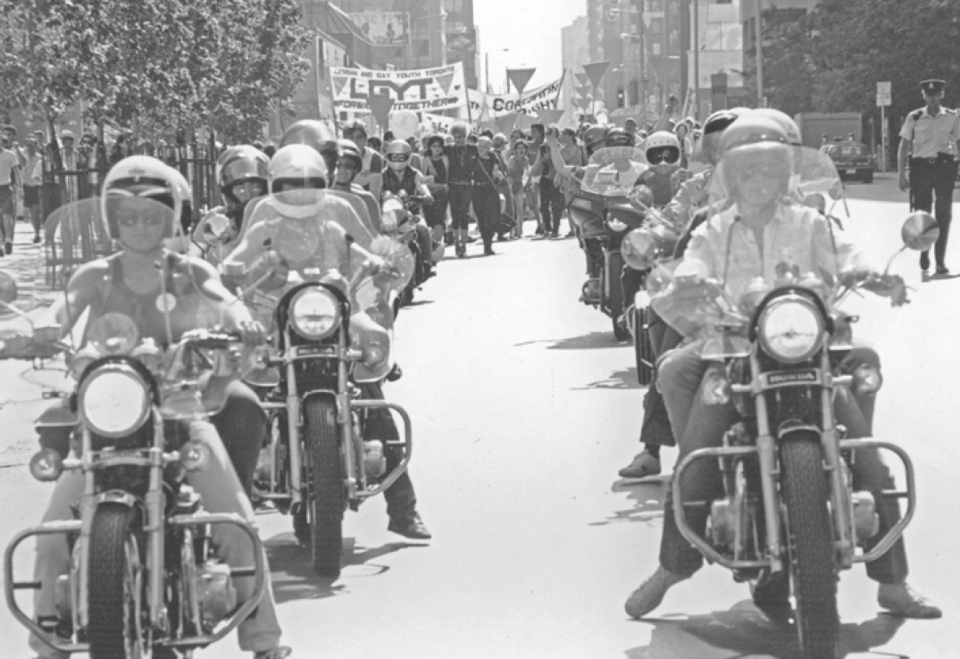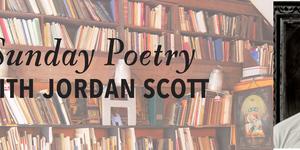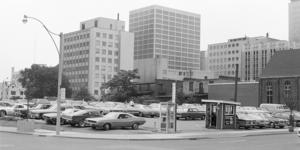
Queerly Reading: Toronto’s Unrecognized First Dyke March by Amy Gottlieb
An excerpt from Any Other Way: How Toronto Got Queer
Imagine three hundred women marching down Yonge Street chanting, ‘We are the D-Y-K-E-S!’ over and over. The year was 1981 and Toronto’s first dyke march was winding its way through downtown. Organized by Lesbians Against the Right, the October 17 protest was a very public response to the rising anti-gay/anti-sex backlash sweeping across North America. I had been involved in lesbian, gay, and feminist activism since the 1970s, and the political context of that moment demanded a highly visible gesture.
The march, which I helped organize, was part of the gay/lesbian resistance to the growing tide of right-wing groups such as Renaissance Canada and Positive Parents, both of which started after the 1978 Toronto visit by Anita Bryant, the one-time Florida beauty queen turned orange-juice promoter who had become the face of the American opposition to gay rights. Bryant’s visit followed the 1977 Emanuel Jaques murder, the police raid on The Body Politic magazine in the same year, and the homophobia swirling around the openly gay George Hislop’s 1980 bid for a seat on city council.
In short, 1981 was a dangerous time to be visibly lesbian or gay in Toronto.
Despite those storm clouds, we printed posters with a thunderbolt across three women’s symbols that read, ‘Bring your balloons, banners and babies.’ In fact, there were only a few babies of lesbians around then – maybe we were predicting the lesbian baby boom.
On the back of the poster was text that unpacked lesbian power, pride, and visibility: how it felt good to be strong, independent women, and how we needed to share the strength and collective power with other lesbians we knew.
More than all that, the demonstration was also meant to provide a specific response to police arrests of gay men in their own homes and police harassment of lesbians. ‘Will your lesbian co-op be charged as a common bawdy house?’ the poster asked. ‘We’re told we’re not fit to be mothers or teachers. We’re told we’re not fit to be part of a family or neighbourhood. We can’t be in the streets, in the schools, in the parks, on the ttc, in bars, in donut shops, even in laundromats. Lesbians are everywhere. And we have the right to be everywhere.’
The march started at the 519 Community Centre on Church Street and wove past what Lesbians Against the Right identified as Toronto’s lesbianl andmarks of that era. Here are the scripts that were read at each stop:
- The Quest (Yonge at Charles) – The owner of this gay man’s bar is Phil Stein, who also owns Stage 212 at Shuter and Dundas, which housed the Fly-by-Night, the one women-only space in the city. The lesbian-feminists operating the bar were kicked out when they had refused to reduce their wages any further. Sympathetic gay men have been boycotting the Quest, and we are here today to show our anger at being limited in our social lives.
- 342 Jarvis (at Carlton) - From 1976 to 1980 this house was a hub of lesbian social, cultural, and political life and housed the Lesbian Organization of Toronto. Active lesbians started meeting in the fall of 1976 and organized brunches, dances, demonstrations, parties, drop-ins, and, finally, the Bi- National Lesbian Conference in 1979.
- McPhail Residence (Church at Granby) – The Board of the ywca has been trying to make up for their losses and bad financial planning by cutting back on the services they have been offering to low-income women. By next year the McPhail Residence may be closed, which will limit low-rental living space to a great many lesbians, Aboriginal women, and women of colour living on welfare, going to school, or working in low-paying jobs.
- Cinema 2000 (Yonge near Dundas) – This cinema and several others nearby are famous for their pornographic, anti-women movies. This section of Yonge Street has also become famous since fall 1977, when, during an anti-rape march, several hundred women occupied Yonge Street, demonstrating against the movie Snuff, which portrayed a woman being tortured and killed.
- The Continental Hotel (Dundas at Elizabeth) – There are still many lesbians in the city, as well as on this march, who remember the Continental Tavern by the bus station. Ten years ago, gay liberation started to enter the Continental and other lesser-known places. The strong women who drank there were a part of lesbian culture we must begin to reclaim with pride.
- Old City Hall (Bay and Queen) – We will wrap up the march with a speech exposing the legal system’s unjust attitudes toward women and lesbian mothers, and the ongoing police harassment of lesbians and the attitudes that bar us from a full life.
Dykes in the streets declared our power and visibility, with many gay male allies marching along on the sidewalk. We walked down Bay Street near Old City Hall, with police escorts. There, in the middle of the street, we linked arms and chanted ‘Look over here, look over there, lesbians are everywhere.’ After more than two decades of Dyke Marches during Pride festivities, that first one reminds me how, in chilly political times, we need kick-ass radical energy. It is a reminder of the ongoing necessity of taking up public space in ways that radically reconfigure our city.
This essay originally appeared in Any Other Way: How Toronto Got Queer, which is 20% off until July 1st!

